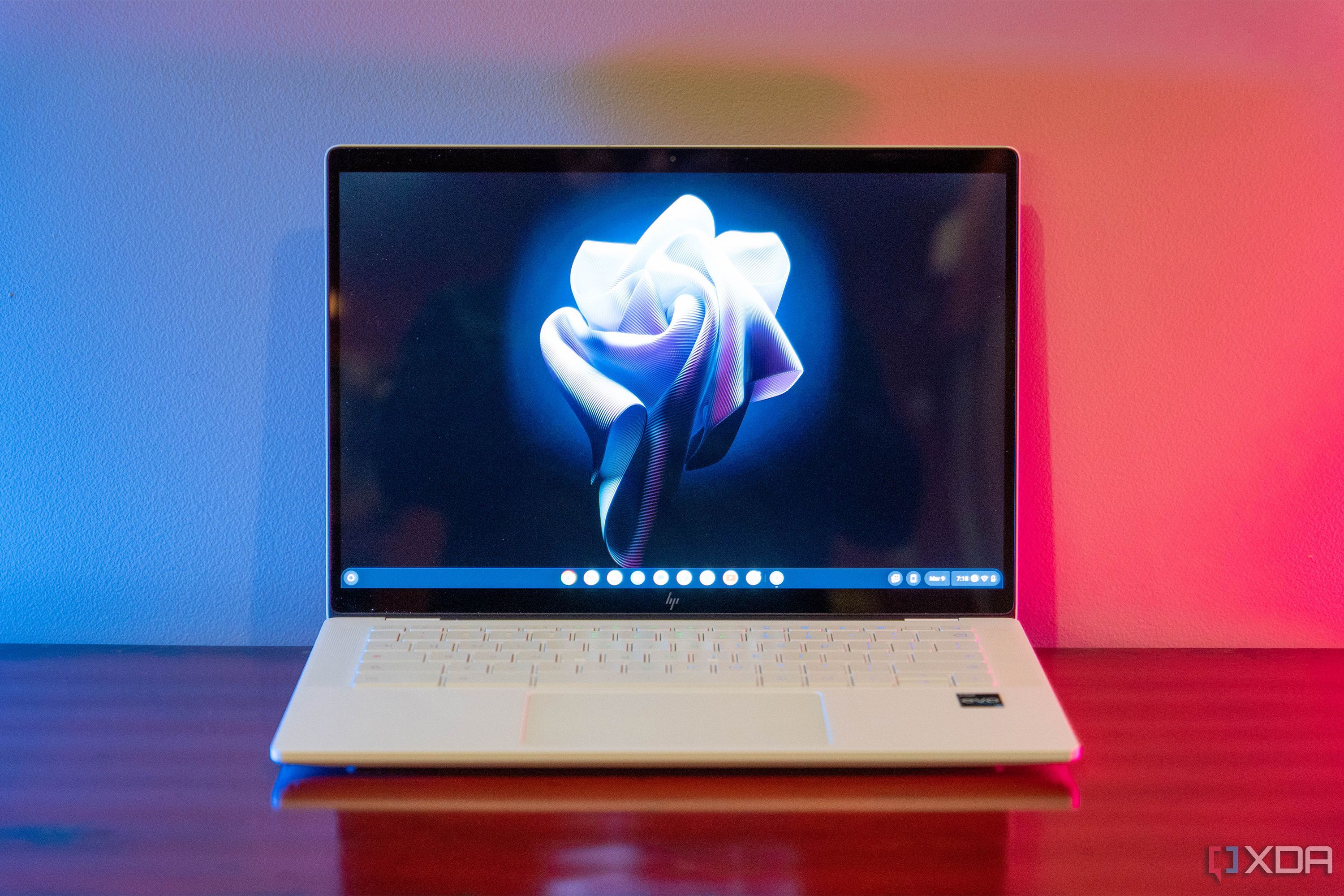5 reasons I like Chromebooks more than my Surface
I use the Microsoft Surface Laptop Studio every day for work. With the power of the Nvidia RTX graphics card, a wonderful touchscreen that supports the Surface Slim Pen 2, as well as excellent multitasking features in Windows 11 like Snap Layouts, I can easily speed through my workflow. However, I've been finding myself using another gadget more and more this year: my Chromebook, specifically the Framework Laptop Chromebook Edition.
I reviewed it last year and found it as one of the best Chromebooks you can buy. As I've been spending time with this Chromebook, along with the original Samsung Galaxy Chromebook as my backup, I've grown very fond of Google's operating system and platform. There are five things that I noticed about ChromeOS that tempt me to use my Chromebook more, and my Surface less.
1 Chromebooks boot so much faster
As a writer with a busy schedule, I've found that time really does mean money. When I start my shift for the day, I want to get right into the action. I don't want to wait for my computer to boot. Even outside of writing, I'm always eager to jump right to my web browser and catch up on tweets, or even get to that show I want to watch on Amazon as fast as possible.
Thankfully, this is one area where Chromebooks shine. As soon as I pull my Framework Laptop out and open the lid, it almost instantly throws me to the login screen. In my tests, it takes 10 seconds to get the login screen and 14 seconds to the ChromeOS desktop. My Surface Laptop Studio, meanwhile, is nowhere as fast. It takes over 30 seconds to get to the lock screen, and then 41 seconds to the desktop. Turning on fast startup doesn't impact this much, either. It's 25 seconds to boot and to the lock screen. Chromebooks are just so much faster.
2 Google Chrome has less bloat than Microsoft Edge
I mentioned this when I wrote about Microsoft putting ads for its services in Windows 11, but I want to bring it up again. Microsoft Edge is my daily browser on my Surface and always has been. The old pre-Chroemium Edge was such a great browser, with little to no bloat.
These days, however, Microsoft is really bloating Edge with useless features and ads that make it frustrating to use. There's a useless sidebar that just links out to Microsoft services. There's also an icon in the menu bar for access to Bing, and if you don't turn it off, you'll be bothered by Edge to save money when shopping. I've been more pleased with Chrome as I use my Chromebooks. Sure, it's not the most memory-efficient browser, but there's no needless bloat. It's clean, with no obtrusive pushes to use other Google services.
3 Using Android apps feels much more natural
My Surface Laptop Studio is a touchscreen device, so it's great for drawing, inking, and other fun tasks. However, one thing that's not fun is using Android apps. The current way Android apps work on Windows 11 is for more experienced users. Otherwise, you can pick from a small selection of apps from the Amazon App Store, but that's pretty much it.
For access to the Google Play Store and to run almostall Android apps in Windows 11, you have to sideload Android apps, which can be a long process. As you can imagine, it's much easier to use them on ChromeOS, especially on a Chromebook with a touchscreen. Just open the Google Play Store, search for what app you want, and that's it! No sideloading required.
The Surface Laptop Studio isn't my only Surface; I also have a Surface Pro 8 that I'll occasionally use. I always like to update it first when I turn it on, but because I don't use it often, it's always behind in updates, and waiting for those updates to complete takes what feels like ages. Windows has to download the update, install the update, and reboot. On other devices other than a Surface, depending on the hardware, these updates can be even longer.
Chromebooks are the complete opposite. On all the hardware I've tried, as soon as a download completes, I reboot my Chromebook, and I'm back into the action in mere seconds, instead of minutes.
5 More things sync between devices
As I said before, my daily device is a Surface Laptop Studio, and I have it set up in a way that I like it. My apps are arranged in the Start Menu so that I can get to them quicker, my display scaling settings are set for maximum efficiency, and even the wallpaper and theme have been customized. However, every time I review a new PC, I have to change all of these things manually.
On a Chromebook, it's much easier to move to new hardware. Since your settings are tied to your account, everything I need syncs, like the layout and folders on the launcher, my Wi-Fi settings, and the apps I downloaded from the Google Play Store. Granted, this might not be a big deal for everyone, but I wish the same applied to Windows and my Surface.
There are still reasons I love my Surface
Surface Laptop Studio
Despite all the things I love about Chromebooks, Windows will always be my home. For things like video editing, and gaming, nothing compares to the power that my Surface Laptop Studio can offer thanks to its GPU.
Granted, Chromebooks are becoming more powerful every year, and can now handle cloud gaming with Steam in Beta, but there's a hard limit as to how fast it can be. Additionally, Surface devices are first-party devices made by Microsoft, so there's little to no confusion when it comes to getting hardware or software support. And, I know that many features on Windows are crafted specifically for this hardware (like the rounded corners in Microsoft Edge Dev).
Since Google has stopped making its own Chromebooks, I fear there's a day when the hardware separates from the software, unlike what Microsoft has done with Windows and Surface. Until then, I can just use both.
Source: XDA Developers


